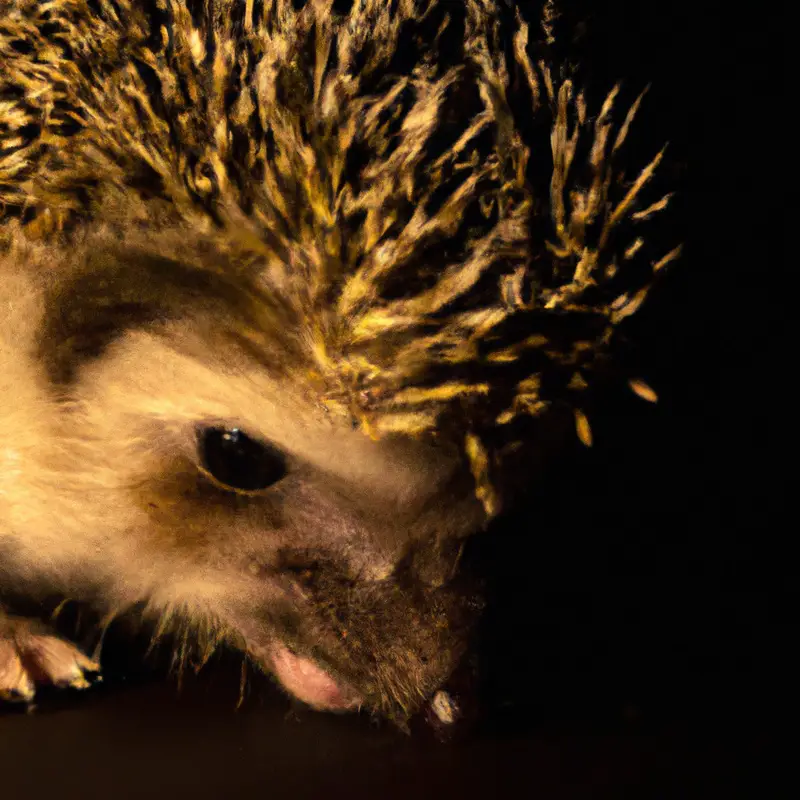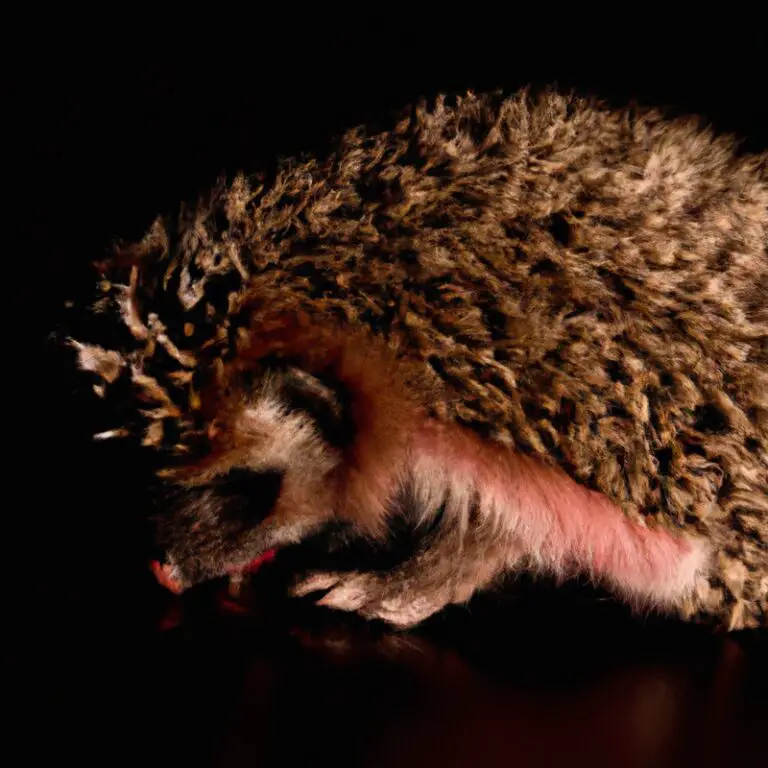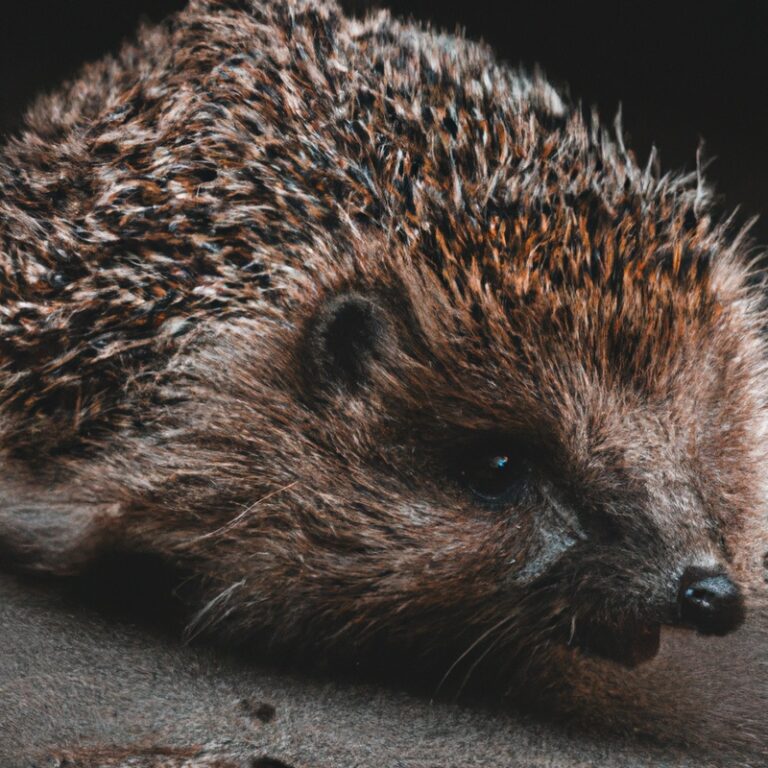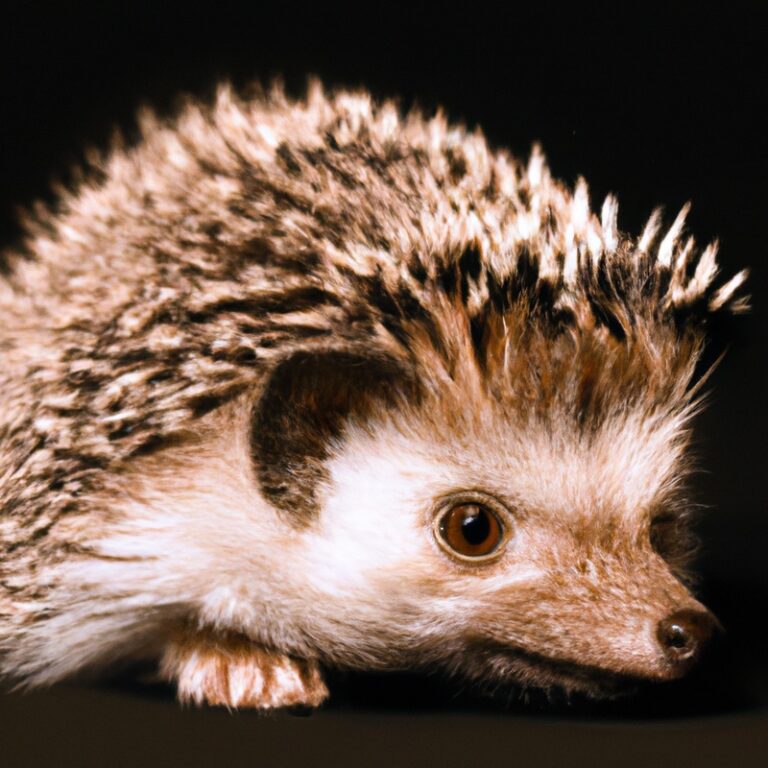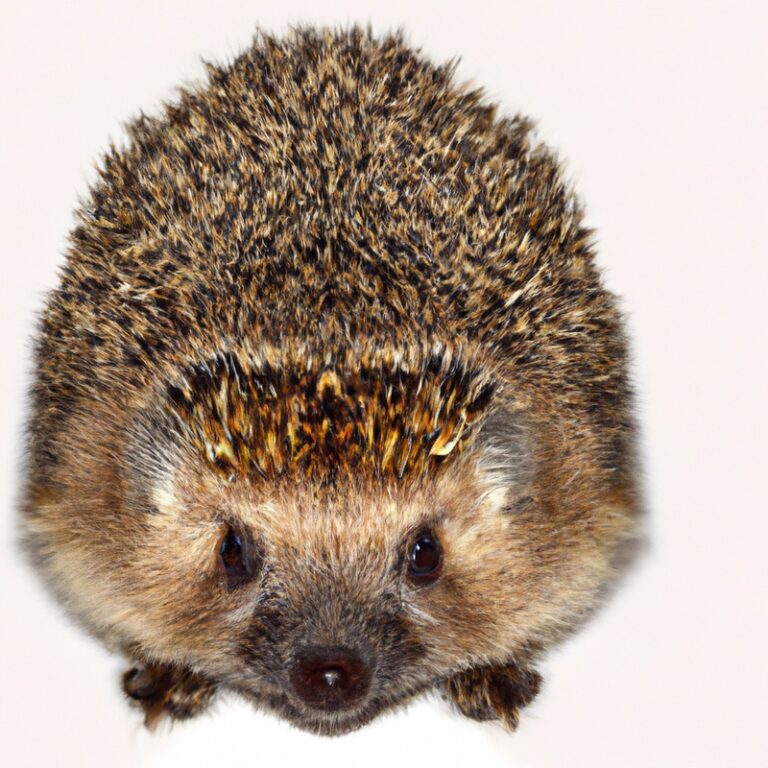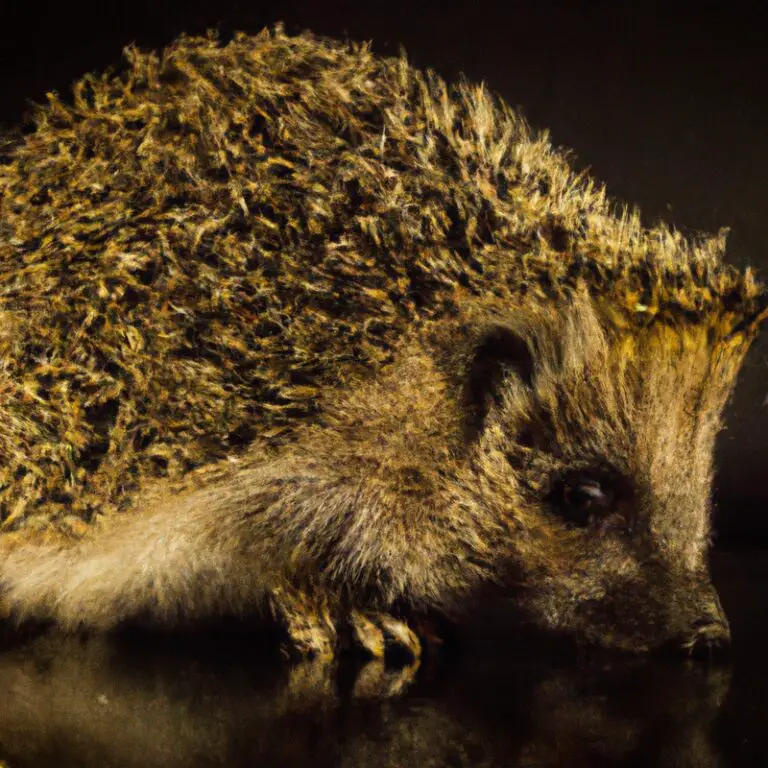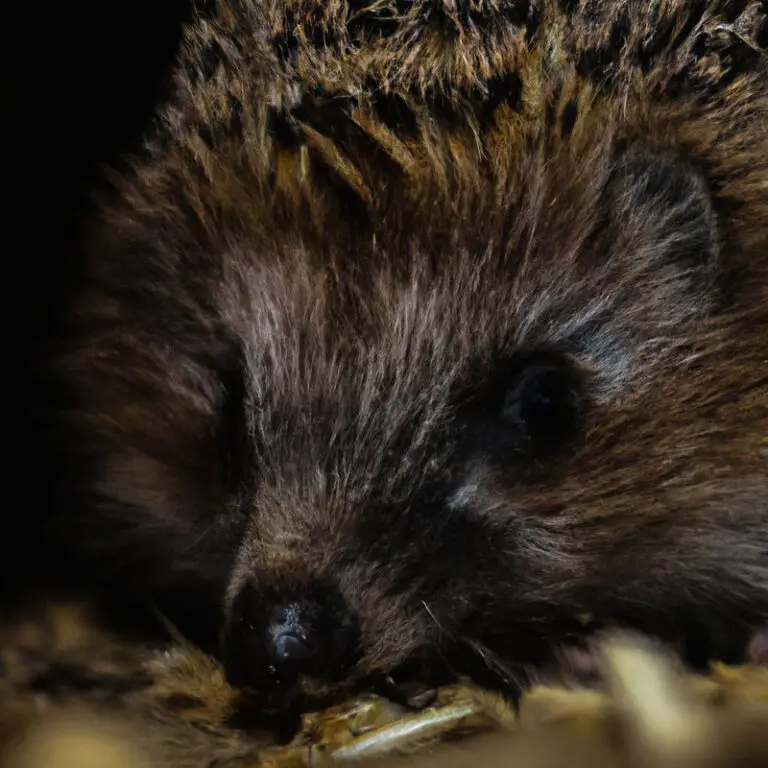How Do Hedgehogs Interact With Their Environment?
Key Takeaways:
- Hedgehogs rely on their sense of smell to navigate their surroundings and find food.
- They use their spines for defense and protection against predators.
- Hedgehogs are nocturnal animals and are active mainly during the night.
- They hibernate during the winter months to conserve energy and survive harsh weather conditions.
Are you curious about the fascinating world of hedgehogs and how they navigate their surroundings?
Well, you’ve come to the right place! In this article, we will delve into the intricate ways in which hedgehogs interact with their environment.
From their incredible physical adaptations that allow them to thrive, to their unique dietary preferences and interactions with other animals, we’ll uncover the secrets of these prickly creatures.
We will also explore the impact of human activities on hedgehog populations and discuss conservation efforts.
So, grab your virtual magnifying glass and get ready to explore the wonderful world of hedgehogs!
| Interaction | Description |
|---|---|
| Hiding | Hedgehogs rely on their spikes to protect themselves from predators. When threatened, they curl up into a tight ball, with their spikes pointing outwards. |
| Movement | Hedgehogs are primarily nocturnal and are solitary animals, spending the night foraging for food. They typically cover several kilometers in search of food and mates. |
| Nesting | Hedgehogs create nests using materials like leaves and grass, usually in a hidden spot like under bushes or in piles of leaves. |
| Eating | Hedgehogs are not picky eaters. They primarily consume insects, worms, snails, and amphibians, but they may also eat fruits, berries, and bird eggs. |
| Hibernation | In colder climates, hedgehogs hibernate during the winter months to conserve energy and survive the harsh conditions. |
Physical adaptations of hedgehogs for their environment
Hedgehogs have spines that act as a protective layer against predators.
Spines and protection
The spines of hedgehogs serve as their primary form of protection. These spines are sharp and prickly, creating a barrier that deters predators from trying to attack them.
When a hedgehog feels threatened, it will roll into a tight ball, exposing only its spines.
This makes it difficult for predators to get past the spiky defense. The spines are also layered with a muscle called the orbicularis muscle, allowing the hedgehog to control the movement and positioning of its spines for maximum protection.

Nocturnal behavior
Hedgehogs are primarily nocturnal creatures, which means they are most active during the night. This behavior allows them to avoid predators, as they can be quite vulnerable during the day.
Hedgehogs have well-developed senses that help them navigate in the dark.
They rely on their acute hearing and sense of smell to find food, avoid obstacles, and communicate with other hedgehogs. Their ability to adapt to low light conditions enables them to thrive in their nocturnal lifestyle.
Hedgehogs may also engage in social behaviors during the night, such as courtship and mating rituals.
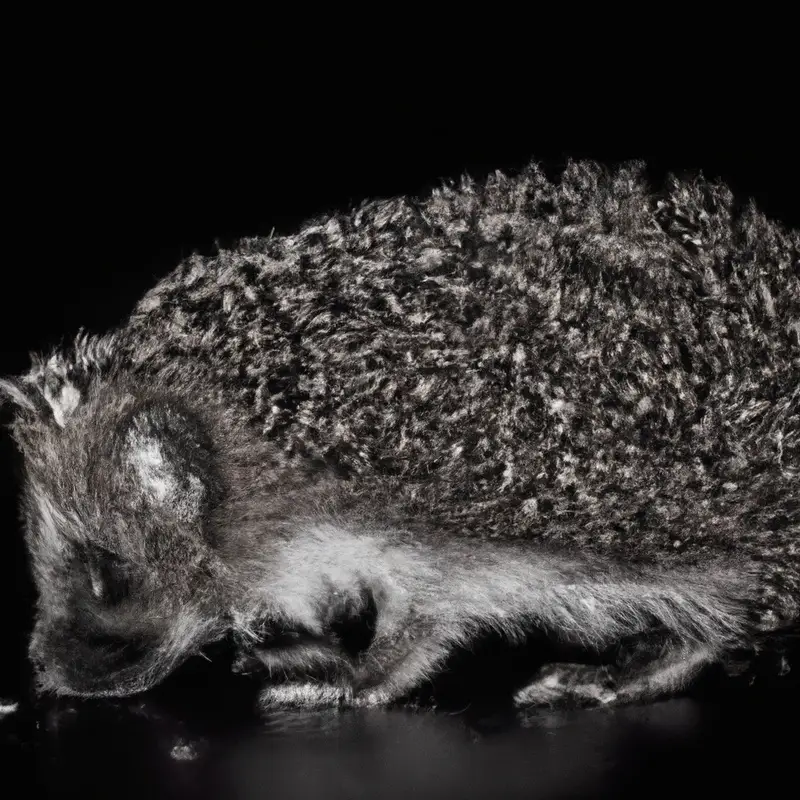
Hibernation
During hibernation, hedgehogs enter a deep sleep-like state to conserve energy and survive harsh conditions.
This is a critical strategy for their survival.
Hedgehogs hibernate to avoid cold winter temperatures and lack of food.
They typically find a secure and warm spot, such as under leaves or in burrows, and lower their body temperature, heart rate, and breathing rate.
This enables them to slow down their metabolism and reduce their energy requirements.
While hibernating, hedgehogs rely on their stored body fat to sustain them until spring.
Hedgehogs and their diet
Hedgehogs have an omnivorous nature, meaning they eat both plants and animals.
They have a wide range of favorite foods that they forage for using their keen sense of smell and their ability to dig.
Omnivorous nature
Hedgehogs have an omnivorous nature, which means they eat both plants and animals. Their diet consists of a variety of food items, including insects, worms, slugs, snails, berries, fruits, and even small vertebrates like mice.
This diverse diet allows them to adapt to different environments and find food sources readily available.
The omnivorous nature of hedgehogs is an important aspect of their survival, as it provides them with a balanced nutrition to thrive in their habitat.
Favorite foods
Hedgehogs have a varied palate and enjoy a range of foods.
Some of their favorite foods include insects like beetles, worms, and slugs.
They also like to snack on fruits such as berries and apples.
Snails, eggs, and even small mammals are also part of their diet.
However, it is important to avoid feeding them dairy products, meat, or any food that is high in salt or sugar.
Providing them with a balanced diet that includes a mix of proteins, fruits, and vegetables is key to keeping them healthy and happy.
Foraging techniques
Hedgehogs have various foraging techniques to find their food. They use their keen sense of smell to sniff out insects, bugs, and other small creatures.
With their sharp claws, they dig into the soil and leaf litter to uncover their prey.
Hedgehogs also use their long tongues to lick up tasty treats like worms and snails. These foraging techniques allow hedgehogs to locate and enjoy a diverse diet in their natural environment.
Hedgehogs and other animals
Hedgehogs interact with other animals through various behaviors and relationships.
Interactions with predators
Hedgehogs have various interactions with predators in their environment.
When faced with a potential threat, hedgehogs employ defensive tactics to protect themselves.
They have sharp spines covering their body, which they can raise as a deterrent.
Hedgehogs also roll up into a tight ball to further shield themselves from predators.
These defensive mechanisms make it difficult for predators to attack or eat them.
Additionally, hedgehogs are nocturnal creatures, which means they are most active at night when predators are less likely to be around.
These strategies help hedgehogs navigate their environment and avoid becoming prey.
Social behaviors with fellow hedgehogs
Hedgehogs are generally solitary animals, but they do exhibit some social behaviors with their fellow hedgehogs. One notable social behavior is mutual grooming, where they use their spines to groom each other.
This behavior helps them strengthen social bonds and maintain a clean and healthy coat.
Hedgehogs also communicate with each other through vocalizations like snuffles, grunts, and squeals. They may engage in courtship rituals during mating season, which involve chasing, sniffing, and circling around each other.
These social interactions are important for hedgehogs to establish territories and find suitable mates.
Hedgehogs and humans
Hedgehogs and humans can form unique interactions.
While hedgehogs are wild animals, they can adapt to human presence in certain situations.
Some hedgehogs may utilize gardens as a source of food and shelter.
It’s important to create a hedgehog-friendly environment by providing access points and avoiding the use of pesticides.
If you come across a hedgehog, observe from a distance and be mindful of their needs.
Remember, hedgehogs are nocturnal creatures, so be considerate of their sleep patterns.
Impact of human activities on hedgehogs
Human activities have a significant impact on hedgehogs.
Loss of natural habitats
Loss of natural habitats has had a significant impact on hedgehogs. Deforestation, urbanization, and agricultural expansion have resulted in the destruction of their natural homes.
This has forced hedgehogs to adapt to new environments, often in urban areas, where they face numerous threats.
The loss of natural habitats has reduced their access to food, shelter, and breeding grounds. It is essential to address this issue by conserving and restoring natural habitats to ensure the survival of hedgehog populations.
Pollution and its effects
Pollution has significant effects on the environment and living organisms.
It can lead to air, water, and soil contamination, harming ecosystems and wildlife.
For example, air pollution caused by vehicle emissions and industrial activities can contribute to respiratory problems in humans and animals.
Water pollution from chemicals and waste disposal can endanger aquatic life and contaminate drinking water sources.
Soil pollution, caused by pesticides and industrial waste, can reduce soil fertility and impact plant growth.
It is crucial to address pollution to protect the environment and promote the well-being of all living beings.
Hedgehog conservation and protection efforts
Efforts are being made to conserve and protect hedgehogs through various initiatives.
Creating hedgehog-friendly environments
Creating hedgehog-friendly environments is key to supporting hedgehog populations and promoting their well-being. Here are some simple steps you can take:
- Provide shelter: Leave areas of wild, unmowed grass or create hedgehog houses in your garden to offer them safe spaces to nest and hibernate.
- Food and water: Leave out shallow dishes of fresh water and provide hedgehog-friendly food, such as wet cat food or specialized hedgehog food, to supplement their natural diet.
- Avoid pesticides: Minimize the use of pesticides in your garden, as they can be harmful to hedgehogs and their food sources. Opt for natural alternatives when possible.
- Create access points: Ensure hedgehogs can enter and exit your garden by creating small holes or gaps in fences and walls.
- Check before strimming: Before using a grass trimmer or strimmer, check for hedgehogs hidden in the undergrowth to avoid harming them.
By making these simple changes, you can contribute to creating a welcoming environment for hedgehogs and help protect their populations.
Promoting awareness and education
Promoting awareness and education about hedgehogs is vital for their conservation.
- Share facts and information about hedgehogs through social media, websites, and educational materials.
- Organize workshops, seminars, and educational programs to teach people about the importance of hedgehog protection.
- Encourage individuals and communities to create hedgehog-friendly habitats in their gardens by providing food, water, and shelter.
- Collaborate with schools and universities to include hedgehog conservation in their curriculum.
- Support and participate in local events and campaigns focused on hedgehog welfare.
By spreading knowledge and fostering empathy, we can all contribute to the well-being and survival of these wonderful creatures.
Supporting local hedgehog rescue centers
Supporting local hedgehog rescue centers is a great way to help protect these adorable creatures.
Here are some ways you can make a difference:
- Donate: Local rescue centers often rely on donations to provide care and treatment for injured or orphaned hedgehogs. Every contribution helps!
- Volunteer: Offering your time and skills can be invaluable to these centers. You can assist with feeding, cleaning, or even fundraising events.
- Spread awareness: Share information about hedgehog rescue centers with friends and family. Encourage them to support these organizations too.
- Create a hedgehog-friendly garden: By providing suitable habitats and food sources, you can attract hedgehogs to your garden and contribute to their conservation efforts.
Supporting local hedgehog rescue centers not only helps individual hedgehogs but also contributes to their preservation on a larger scale.
Frequently Asked Questions (FAQs)
Are hedgehogs dangerous to humans?
Are hedgehogs dangerous to humans?
No, hedgehogs are not typically dangerous to humans.
They have a gentle nature and are more likely to curl up into a ball or run away when they feel threatened.
While they have spiky quills for self-defense, these are not designed to harm humans.
However, it’s important to note that wild hedgehogs may carry parasites or diseases.
It’s best to admire them from a distance and avoid handling them without proper knowledge and precautions.
What should I do if I find a hedgehog in my garden?
If you find a hedgehog in your garden, there are a few simple steps you can take to help it out. First, make sure the hedgehog is not injured or in distress.
If it is, contact a local wildlife rescue for guidance.
If the hedgehog seems healthy, provide it with food and water, such as wet cat food and a shallow dish of water. Create a safe, sheltered area for the hedgehog to rest by placing some leaves and twigs in a corner of your garden.
Finally, keep an eye on the hedgehog from a distance to ensure it can continue its journey safely.
Can hedgehogs swim?
Yes, hedgehogs are capable of swimming.
While they may not be the most graceful swimmers, they can manage to stay afloat and move through the water.
Hedgehogs have a natural instinct to float when they encounter water, and they use their small legs to paddle and propel themselves forward.
However, it’s important to note that not all hedgehogs enjoy swimming and some may even find it stressful.
So, if you have a pet hedgehog, it’s best to provide shallow water for them to explore and never force them into deep water.
How can I attract hedgehogs to my garden?
To attract hedgehogs to your garden, you can take a few simple steps. Provide them with a source of food by leaving out dishes of meat-based cat or dog food, or specialized hedgehog food.
Make sure there’s fresh water available too.
Create shelter by leaving some piles of leaves or logs where hedgehogs can nest and hibernate. Avoid using pesticides in your garden, as these can harm hedgehogs.
Finally, consider installing a hedgehog house or nesting box for added protection.
Final Verdict
Hedgehogs have unique physical adaptations that allow them to thrive in their environment.
Their spines serve as a defensive mechanism, while their nocturnal behavior and hibernation help them conserve energy.
Hedgehogs are omnivorous and employ effective foraging techniques to find their favorite foods.
They interact with other animals by avoiding predators, exhibiting social behaviors with fellow hedgehogs, and sometimes finding companionship with humans.
However, human activities pose a threat to hedgehogs through loss of habitat and pollution.
To protect these amazing creatures, we can create hedgehog-friendly environments, raise awareness, and support local hedgehog rescue centers.
Together, we can ensure the survival and well-being of hedgehogs in our environment.

